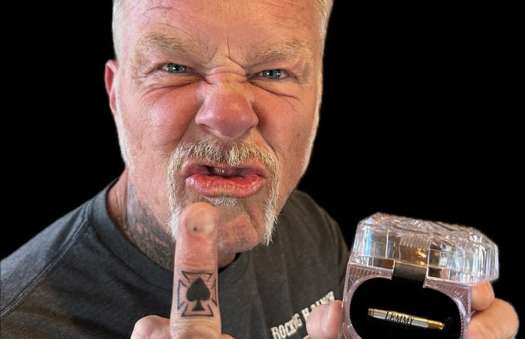Fruits, vegetables, meat, fish, dairy products, eggshells, coffee and tea, paper food containers and wrapping, baked goods, herbs and spices, diapers, animal waste and bedding. One persons trash turns out to be the futures technological innovation; the unappetising organic stew of biodegradable waste material typically festering and refusing to decompose in a garbage dump is reborn in a recycling program that brings composting curb-side. Technology may be, in most peoples eyes, the latest in gizmos and gadgets, but practical progress looks more like the aqueducts of Rome than the hottest camera phone.
Since it began in 2002, the curb-side organic recycling program in Toronto has diverted 11 garbage trucks a day (100,000 tons to date) away from landfill and into a process that allows organic materials to break down naturally; its current by-products are helping to "green the city in other ways, but its future is even more promising (see sidebar below).
For casual gardeners and rural dwellers, a compost pile is a common sight, topped with veggie choppings, eggshells and coffee grounds where worms dig and microbes thrive. In this case, urbanites put their household waste in plastic bags, which are collected weekly with garbage and recycling. At the processing facility, it goes through two stages. The first is via an apparatus called a hydro-pulper, like a washing machine on its spin cycle. Water is added to the organics, still in their plastic bags; hydraulic friction tears the bags open and the residue that remains, due to the density of plastic, floats to the top and is skimmed with a mechanised rake. The organics are fragmented more and more until they become homogenous slurry. The liquefied waste flows through a series of filters where impurities like glass, small bones and seafood shells are stopped. A hydro-cyclone removes the liquid from the slurry and the organics once again become a solid, now ready to meet their microbes.
The second stage, anaerobic digestion (meaning decomposition without air), actually goes one better than the traditional backyard compost and other cities that use traditional aerobic digestion to process yard clippings. (Halifax processes some organics this way.) By employing a fickle type of microbe, more complex organic materials meats, pet droppings and dairy products can decompose. The digester (like a water tower without stilts) maintains the delicate and chemically specific environment these microbes need to survive; in 34 degree centigrade heat, they feast for 14 days, releasing methane gas in the process. When this process can break down the remaining humus no further, its transferred to an open field called a windrow, where oxygen exposure breaks it down further and kills any infectious microbes.
The soil that remains is tested to ensure that it meets the stringent provincial regulations for heavy metals and plastic. Once it has passed these tests, it can be used by the city as top dressing for parks and landscaping. Appropriately, the city currently returns some material back to its source. City waste management official Craig Bartlett explains: "We have compost give away days where residents just eat this stuff up. Its become black gold. We have people pulling up with their cars and shovelling the stuff into their trunk. Its quite comical.
The program is still in its infancy; collection from multi-dwelling units like apartments and condos hasnt begun yet, and the program was only recently ramped up to cover single-unit dwellings city-wide, but its already a proven success. The local community that piloted the program, Etobicoke, has a 90-percent participation rate. Participation levels are so high, the city out-sources some of its organics processing to third party companies.
But because such programs are currently implemented on a municipal scale, start-up costs have been a major hurdle; Edmonton, Hamilton, Kingston, Ottawa and Vancouver have all expressed interest in enduring the short-term pain that such long-term gain requires. If this plays out like the early-adopting municipalities that pioneered paper recycling where paper mills had to be paid to take away the recycled materials because they were not yet equipped to add recycled content to their process the gains may be further away then most politicians attention span. They just need to be convinced that a political will exists amongst their constituency. Have you googled your municipal leaders lately?
Swedes are a Gas
The story of anaerobic digestion might end "and they lived happily waste-managed ever after, but instead theres a sequel. A by-product of this process could help solve some of this worlds energy woes: biogas. In the middle stages of the anaerobic digestion process microbes release methane.
Although Toronto has yet to figure out how to keep the digester in a balanced and constant state of producing this gas, it has potential to be burned and create electricity to heat buildings close by, power processing plants themselves, or it could be used as it is in Sweden.
The Swedes have a number of forward-thinking biogas programs. In the city of Linköping, they are piping the gas throughout the city, powering 500 municipal vehicles and 60 buses. Countrywide, Swedes have 1,500 biogas vehicles, 22 filling stations, and have tested the first biogas train. "Trendsetters, a EU program for improving the quality of life throughout the continent, is working on testing and transferring the Swedish model to the rest of the Union. They estimate 12 to 20 percent of non-renewable energy can be replaced by this future fuel. While Bush dreams of piping fresh corn through the hands of some Texas Tea friends into American engines, the Swedes have already made the first inroads.
Since it began in 2002, the curb-side organic recycling program in Toronto has diverted 11 garbage trucks a day (100,000 tons to date) away from landfill and into a process that allows organic materials to break down naturally; its current by-products are helping to "green the city in other ways, but its future is even more promising (see sidebar below).
For casual gardeners and rural dwellers, a compost pile is a common sight, topped with veggie choppings, eggshells and coffee grounds where worms dig and microbes thrive. In this case, urbanites put their household waste in plastic bags, which are collected weekly with garbage and recycling. At the processing facility, it goes through two stages. The first is via an apparatus called a hydro-pulper, like a washing machine on its spin cycle. Water is added to the organics, still in their plastic bags; hydraulic friction tears the bags open and the residue that remains, due to the density of plastic, floats to the top and is skimmed with a mechanised rake. The organics are fragmented more and more until they become homogenous slurry. The liquefied waste flows through a series of filters where impurities like glass, small bones and seafood shells are stopped. A hydro-cyclone removes the liquid from the slurry and the organics once again become a solid, now ready to meet their microbes.
The second stage, anaerobic digestion (meaning decomposition without air), actually goes one better than the traditional backyard compost and other cities that use traditional aerobic digestion to process yard clippings. (Halifax processes some organics this way.) By employing a fickle type of microbe, more complex organic materials meats, pet droppings and dairy products can decompose. The digester (like a water tower without stilts) maintains the delicate and chemically specific environment these microbes need to survive; in 34 degree centigrade heat, they feast for 14 days, releasing methane gas in the process. When this process can break down the remaining humus no further, its transferred to an open field called a windrow, where oxygen exposure breaks it down further and kills any infectious microbes.
The soil that remains is tested to ensure that it meets the stringent provincial regulations for heavy metals and plastic. Once it has passed these tests, it can be used by the city as top dressing for parks and landscaping. Appropriately, the city currently returns some material back to its source. City waste management official Craig Bartlett explains: "We have compost give away days where residents just eat this stuff up. Its become black gold. We have people pulling up with their cars and shovelling the stuff into their trunk. Its quite comical.
The program is still in its infancy; collection from multi-dwelling units like apartments and condos hasnt begun yet, and the program was only recently ramped up to cover single-unit dwellings city-wide, but its already a proven success. The local community that piloted the program, Etobicoke, has a 90-percent participation rate. Participation levels are so high, the city out-sources some of its organics processing to third party companies.
But because such programs are currently implemented on a municipal scale, start-up costs have been a major hurdle; Edmonton, Hamilton, Kingston, Ottawa and Vancouver have all expressed interest in enduring the short-term pain that such long-term gain requires. If this plays out like the early-adopting municipalities that pioneered paper recycling where paper mills had to be paid to take away the recycled materials because they were not yet equipped to add recycled content to their process the gains may be further away then most politicians attention span. They just need to be convinced that a political will exists amongst their constituency. Have you googled your municipal leaders lately?
Swedes are a Gas
The story of anaerobic digestion might end "and they lived happily waste-managed ever after, but instead theres a sequel. A by-product of this process could help solve some of this worlds energy woes: biogas. In the middle stages of the anaerobic digestion process microbes release methane.
Although Toronto has yet to figure out how to keep the digester in a balanced and constant state of producing this gas, it has potential to be burned and create electricity to heat buildings close by, power processing plants themselves, or it could be used as it is in Sweden.
The Swedes have a number of forward-thinking biogas programs. In the city of Linköping, they are piping the gas throughout the city, powering 500 municipal vehicles and 60 buses. Countrywide, Swedes have 1,500 biogas vehicles, 22 filling stations, and have tested the first biogas train. "Trendsetters, a EU program for improving the quality of life throughout the continent, is working on testing and transferring the Swedish model to the rest of the Union. They estimate 12 to 20 percent of non-renewable energy can be replaced by this future fuel. While Bush dreams of piping fresh corn through the hands of some Texas Tea friends into American engines, the Swedes have already made the first inroads.




